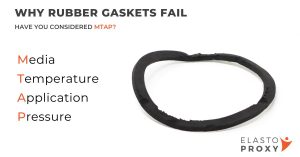What are the top manufacturing trends for 2022? And how can your company leverage them to address challenges that just won’t go away? The year 2021 is behind us, but many manufacturers are still facing supply chain disruptions and a skilled labor shortage. So, how can you increase output and build a more productive workforce? Automation and upskilling can help, but what if you can’t afford or aren’t ready to invest in co-bots, robots, and training programs?
The answer to all of these questions involves reducing manufacturing waste.
What is Manufacturing Waste? (Hint: It’s Bitter)
Manufacturing waste is any expense or effort that does not transform materials into a product for which a customer is willing to pay. Let’s start with a simple but sometimes bitter example: lemonade. Customers are willing to pay for a product (the lemonade) where the proper amount of raw materials (lemons, water, and sugar) have been processed properly. They’re not willing to pay for a drink that’s too tart because you’ve added too many lemons or too little sugar.
Now let’s apply a few twists. Customers don’t want to pay more because you bought the wrong amount of lemons, had to switch suppliers because of a lemon shortage, or are facing higher labor costs because it’s hard to find anyone who wants to work at a lemonade stand these days. Customers won’t pay more either because you used a stove and took the time to make a simple syrup instead of just stirring the sugar in the lemon juice. Your lemonade might taste great, but does it include some costly wastes?
The Top Manufacturing Trends of 2022 and the Eight Forms of Waste
Your manufacturing operation is a lot like a lemonade stand. If you don’t reduce waste, you could struggle to compete. You’ve probably heard of lean manufacturing, but what about the eight types of manufacturing waste?
- Transportation
- Inventory
- Motion
- Waiting
- Over-production
- Over-processing
- Defects
- Unused knowledge
This year, Elasto Proxy predicts that reducing each form of waste will become a top priority. In other words, you might say that the top manufacturing trends of 2022 involve the reduction of waste.
#1 Transportation
Transporting a product within your facility doesn’t add value to it. Consider what can happen to coils of rubber that are used in the door gaskets on heavy equipment.
- Inventory personnel stock shelves with boxes of long lengths.
- Pickers move these boxes from stores to the shop floor.
- The boxes are stacked against a wall and eventually moved to the assembly line.
- Fabrication occurs and the gaskets are installed.
There’s plenty of material movement, but no added value until the gasket fabrication step. At a time when manufacturers can’t find enough workers, look for a renewed emphasis on improved efficiency (and not just increased automation). For example, Elasto Proxy can send you a box with all of the parts that are needed for a build – and this box can travel right from your receiving dock to your assembly line.
#2 Inventory
Manufacturers maintain three types of inventory.
- Raw Material Inventory (RMI)
- Work-in-Process (WIP)
- Finished Goods Inventory (FG)
Of these three types, WIP is often the most expensive. That’s why the semiconductor shortage has been so painful for the automotive industry. Carmakers can assemble most of a vehicle but can’t finish the job (and sell the final product) because of missing chips. In 2022, we expect that manufacturers in all industries will look for ways to secure their supply of components, including rubber and plastic ones. By sharing your sales forecast with Elasto Proxy, we can help you to avoid stock-outs of these items.
#3 Motion
Motion is the movement of people within your facility. Workers move to fetch the materials and tools they need to do their jobs. Employees also bend, climb, and twist during activities such as loading and unloading. This causes fatigue and reduces productivity. If a workplace isn’t ergonomic, injuries may occur. Co-bots and robots can help, but the equipment investments can be considerable. Processes that reduce wasted motion cost less and help keep workers healthy. That’s why we expect to see less wasted motion in the year ahead.
#4 Waiting
Waiting is a form of manufacturing waste that occurs whenever workers, machines, or materials require an unavailable resource. The causes can include change-overs, unplanned maintenance, and stock-outs. Waiting add costs, but it can also cause downstream affects like hurried quality checks and missed shipments. The digitization of manufacturing (i.e., Industry 4.0) can promote greater visibility, so look for manufacturers to adopt technologies that put more and better data at their fingertips. Companies will also look to partner with suppliers who can anticipate their needs.
#5 Over-Production
Over-production occurs when upstream operations exceed the requirements of downstream processes. Instead of making only what’s needed, workers create a supply for which there isn’t a demand. At a time when workers themselves are in short supply and manufacturers can’t afford to tie-up excess cash, look for efforts to curb overproduction. Elasto Proxy can send you only what you need when you need it – and you won’t have to pay for it until it arrives.
#6 Over-Processing
Over-processing is the redundant performance of activities such as handling, counting, and inspection. It can include unnecessary documentation checks, too. By streamlining operations, manufacturers can reduce the number of times that employees need to “touch” components such as rubber and plastic parts. That’s why Elasto Proxy supplies kits where all of the parts for a build are packaged in order of installation. This year, we expect even more manufacturers to discover the value of assembly packaging.
#7 Defects
Defects occur when a product is improperly made and departs from its intended design. For example, a worker may cut extruded rubber with a knife and then bond the cut lengths with glue. If the cuts are jagged and the glue won’t withstand water, the finished gasket won’t provide proper outdoor sealing. At a time when many materials are in short supply, it’s critical to maximize yields. In 2022, look for more manufacturers to outsource component-level fabrication to ensure quality and reduce waste.
#8 Unused Knowledge
Finally, unused knowledge is also a form of manufacturing waste. Often, it’s attributed to a lack of teamwork and employee disengagement. No matter the cause, unused knowledge is a lost opportunity – and a costly one at that. So, now that you know about the top manufacturing trends of 2022 and how they can reduce manufacturing waste, what steps will you take to make your organization even better than ever?
Contact Elasto Proxy and talk to our team about how we can help.










